How to choose and install wall panels in the kitchen
High humidity and temperature changes are common for the working environment of the kitchen. Therefore, the materials used to design the “home”, are special requirements – they must not only approach the chosen interior style, but also be easy to care for and high strength. It can be both a tile and washable wallpaper, but we suggest paying attention to such a promising covering as a wall panel, because an excellent combination of functional and decorative properties made this material one of the most popular types of decoration to date.
Criteria for selecting wall panels
One of the significant competitive advantages of wall panels is the huge variety of decorative solutions. These materials can imitate wood, metal, brick or marble, if necessary, you can find any shade of the color spectrum, pick up a cover with an ornament and even a realistic 3D-printing. Before buying a decorative finish, consider the criteria that must be answered kitchen wall panels from a practical point of view.

Finishing with photo printing – an effective decoration of the kitchen
- Steam and moisture resistance
When cooking, washing dishes and processing food on walls, water, grease and hot steam are often sprayed. If the coating has low resistance to such an effect, the interior will soon lose its original gloss, and it will be necessary to think again about the repair.
- Heat resistance
This property is most relevant for finishing the zone immediately adjacent to the plate, especially if it is gas.
- Easy cleaning
No matter how neat the hostess and powerful hood, on the kitchen surfaces quickly formed a thick coating, traces of drops, fingerprints and other cooking costs. Therefore, you need to choose a non-marble coating that is easy to clean without losing quality and the use of expensive chemicals, because regularly update the finish because of the appearance of scratches, scuffs or bleached bleach spots rather expensive.
In addition to functional criteria, we should not forget about the decorative qualities of the finish. Wall panels for the kitchen should serve for a long time and please the eye, because this room for many – not only a place for cooking, but a cozy corner where a whole family or a sincere company of friends gather for a tasty meal. The benefit of a variety of colors and patterns allows you to choose the best finish for every taste.
Advice! For self-decoration of walls, kitchen panels are the ideal solution. They are easily mounted alone and do not require special building skills.

Due to a wide variety of decor wall panels can be selected for any interior
Classification by size
One of the most important parameters, which should be taken into account when buying material, is the size of the wall panels. This criterion depends on many factors: the size of the kitchen itself, the planned coverage area (all walls or finishing only the working apron), and even the intensity of the sources of natural and artificial lighting.
The most common types are:
- Ribbon bars – long (from 2,4 to 3,7 m) and narrow enough (from 10 to 30 cm) of a strip of a covering it is possible to have both horizontal, and vertical numbers. Most often used in a single color neutral gamma. Good for small rooms.
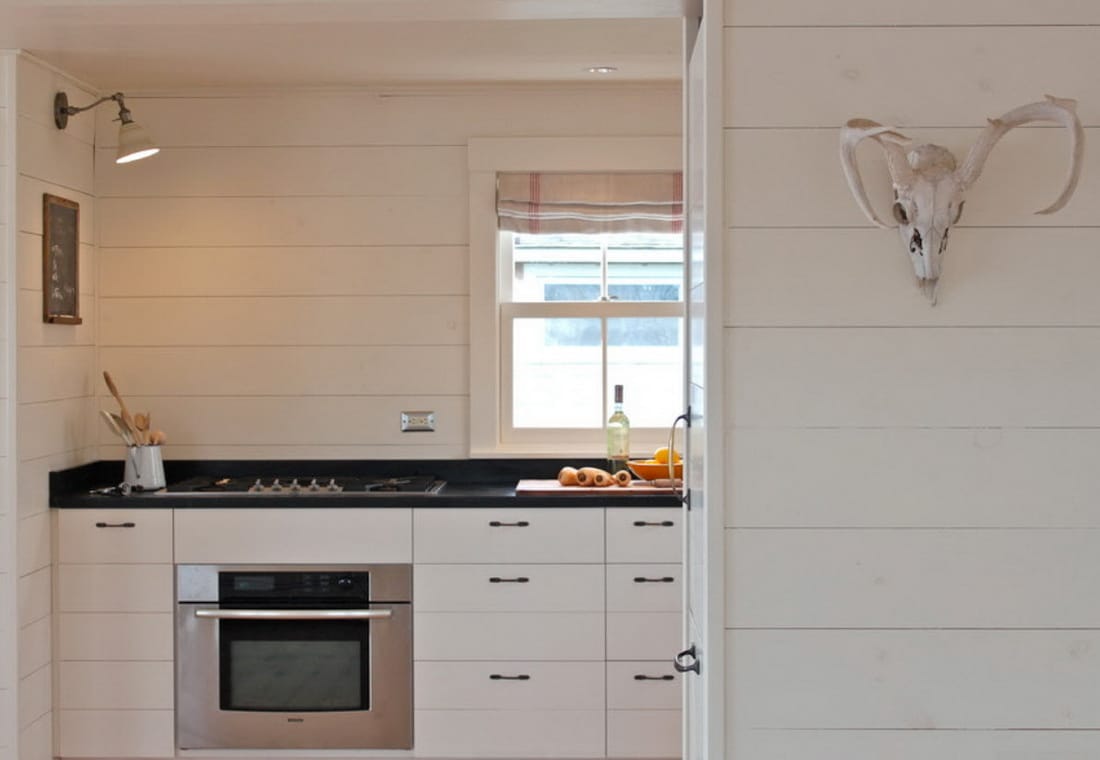
Rack panels, laid horizontally

PVC panels for wood, mounted vertically
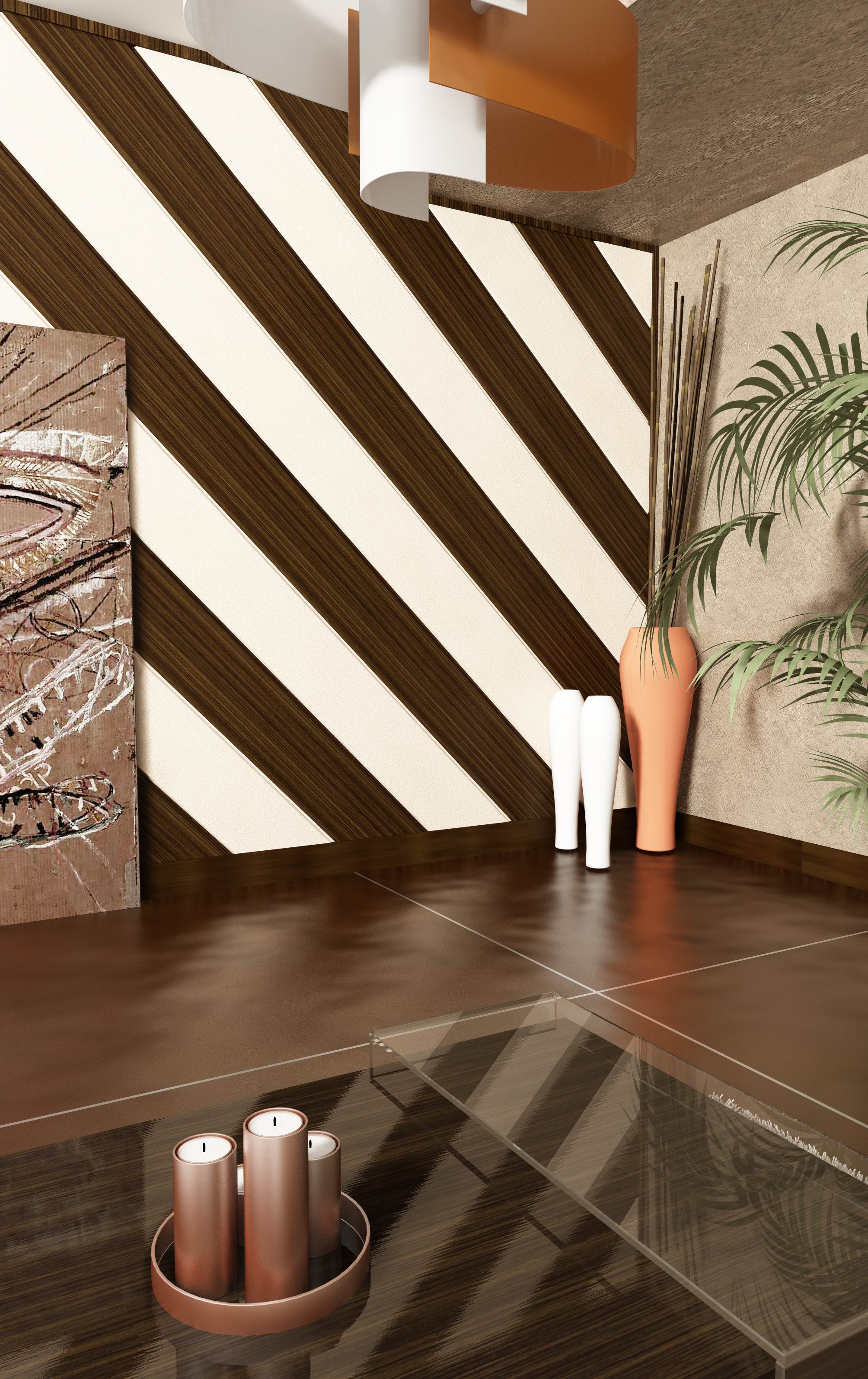
Diagonal arrangement of racks with a color combination
- Square plates – today are produced as small, with a side of 30 cm, and rather large (length of the rib – 98-100 cm) fragments. Depending on the color, pattern and way of layout with their help, you can create original patterns and spectacular panels.

Zoning of the dining room space
- Leaf wall panels – the largest variety of material for quick finishing of large areas. You can choose the size in such a way that one or two sheets completely close the wall, or adjust the fragment to the size of the apron. They have a width of 80 to 203 cm and a length of 1.5-4 m. For the most part, this coating imitates any natural materials – stone, tile, wood, but you can find panel panels with original volumetric drawings .
Sheet panels with different decor options:

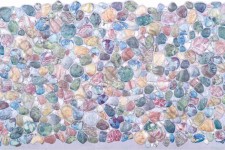
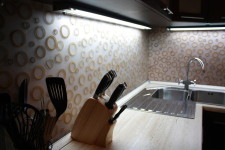
Varieties of wall panels based on materials
A wide selection of panels on the wall for the kitchen is also conditioned by the variety of materials from which they are made. Each variant has its pluses and minuses. Let’s take a closer look at the most popular coatings.
Wall panels made of plastic
Owners who prefer to focus on functionality and affordable materials cost more often pay attention to plastic panels for walls. This choice is justified, because the list of positive qualities of such coverage is impressive:
- The lowest cost compared to other materials.
- A wide range of decorative options, including a variety of colors and volume effects, allows you to choose the finishes for any interior style.
- Environmental compatibility of the material – it is used not only in construction, but also in the food industry, medicine.
- Resistance to external influences of water, steam and household chemicals.
- Hygienic – on a dense smooth surface of panels made of plastic, fatty plaque accumulates less, and it can be washed with a regular sponge using non-abrasive agents.
- The longevity of the material is also not in doubt, although much depends on the quality of the plastic itself. Inexpensive thin bars already in 5-7 years can fade or form dents, but dense and thick plates that have been heat-treated, retain all their properties for at least 10 years.
- A small weight of wall panels for the kitchen made of plastic allows quickly and without much effort to install them even to an inexperienced master.
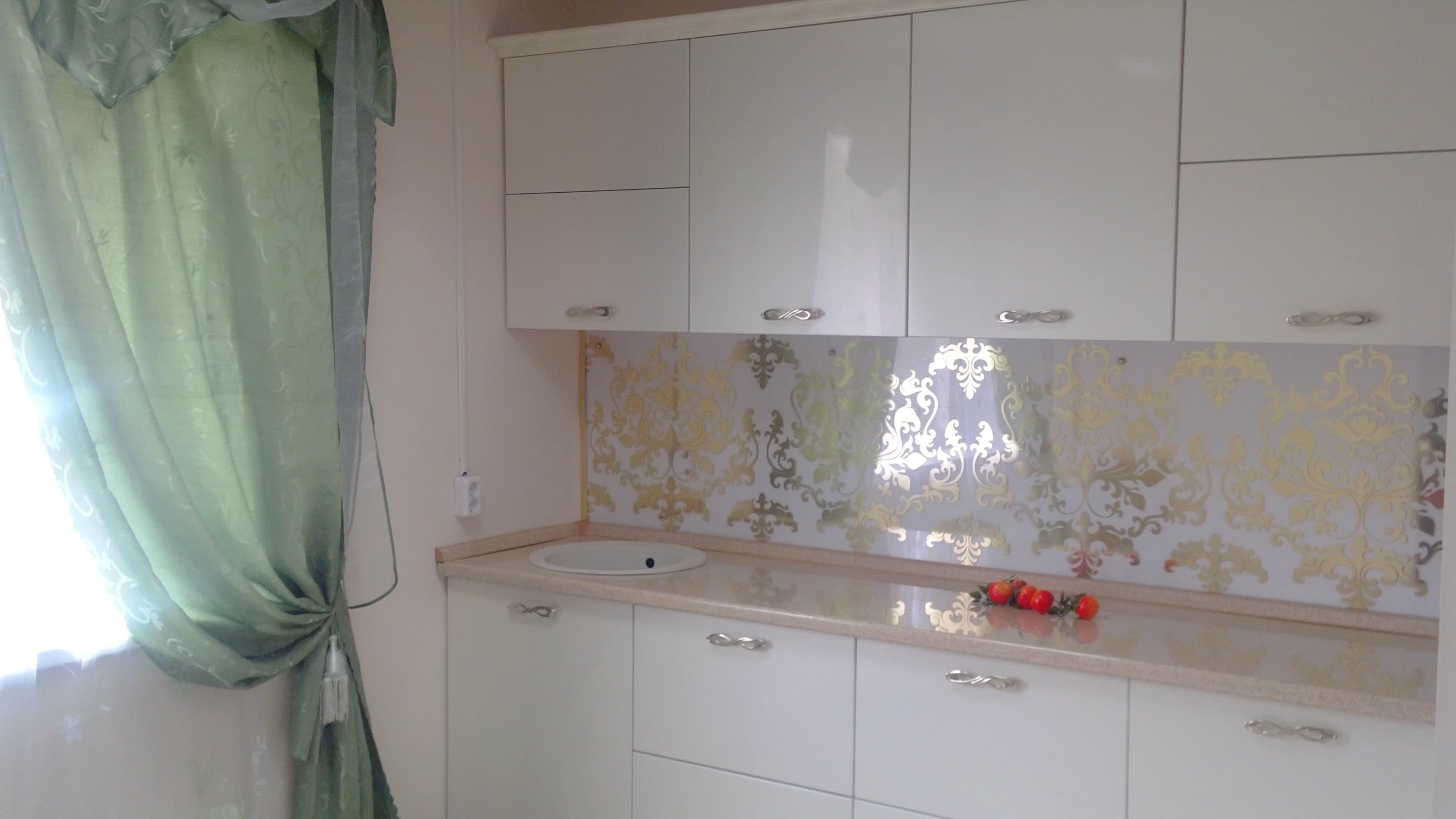
Wall sheet PVC panel – luxury and conciseness
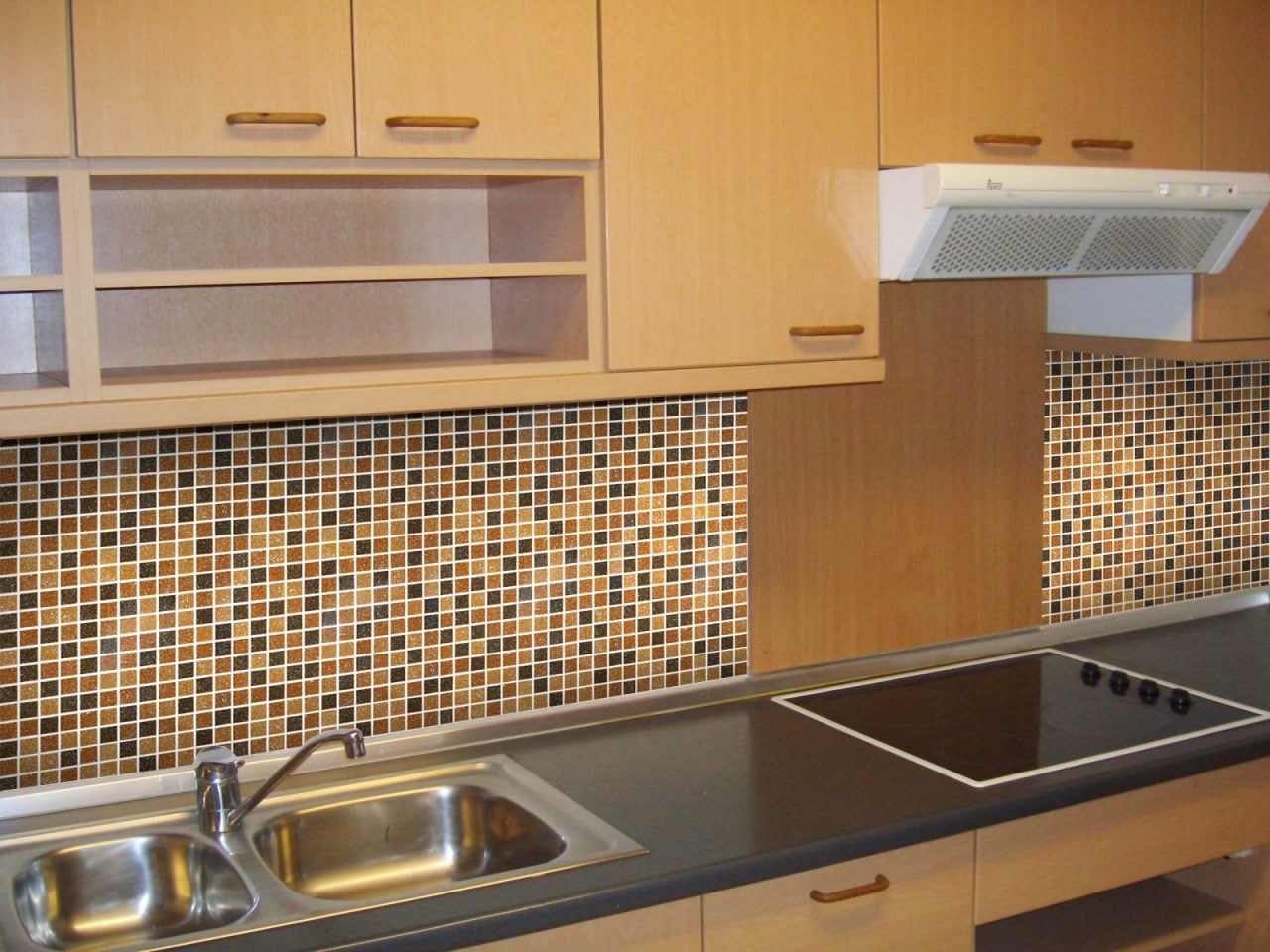
Soft PVC finishing – imitation of mosaic tiles
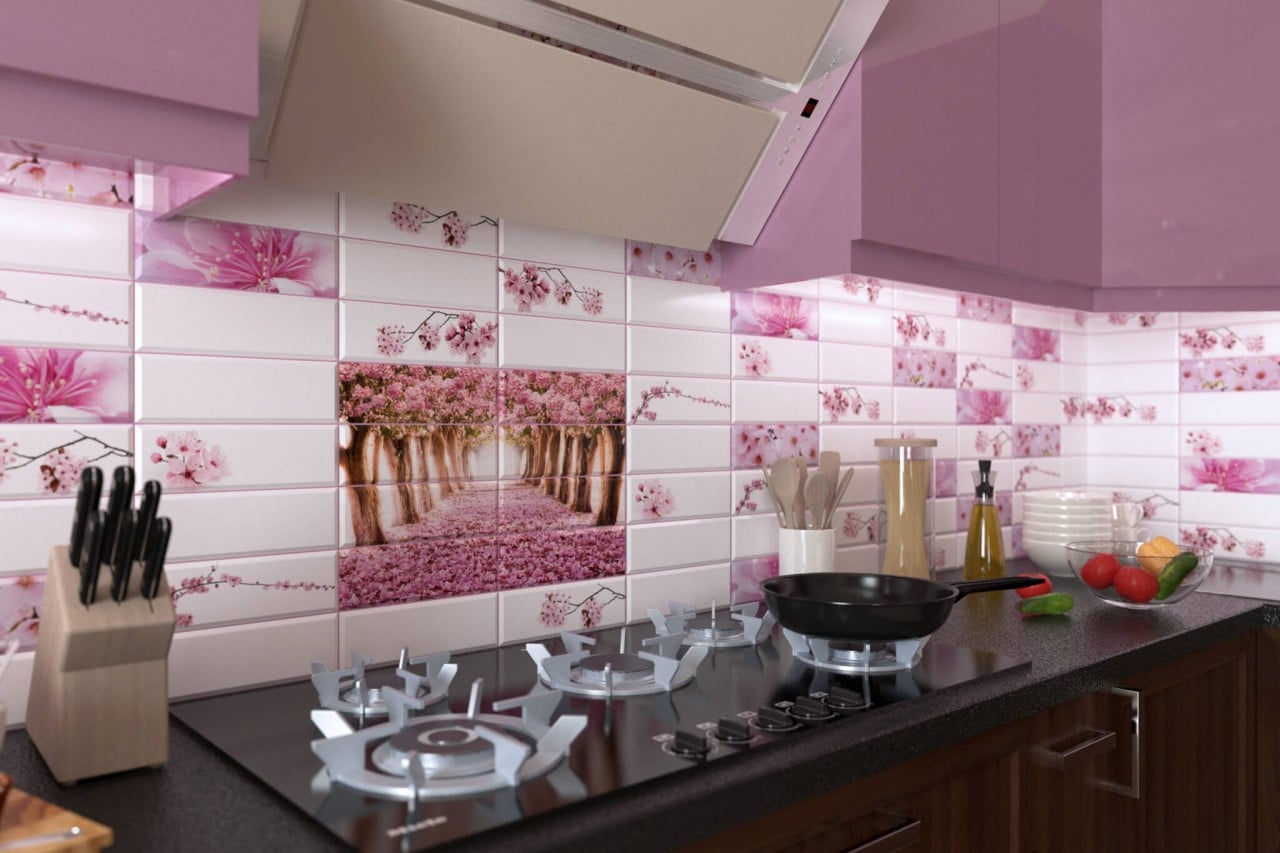
Patterned PVC panels – painting “Sakura”

Decorative combinations of plastic finishes
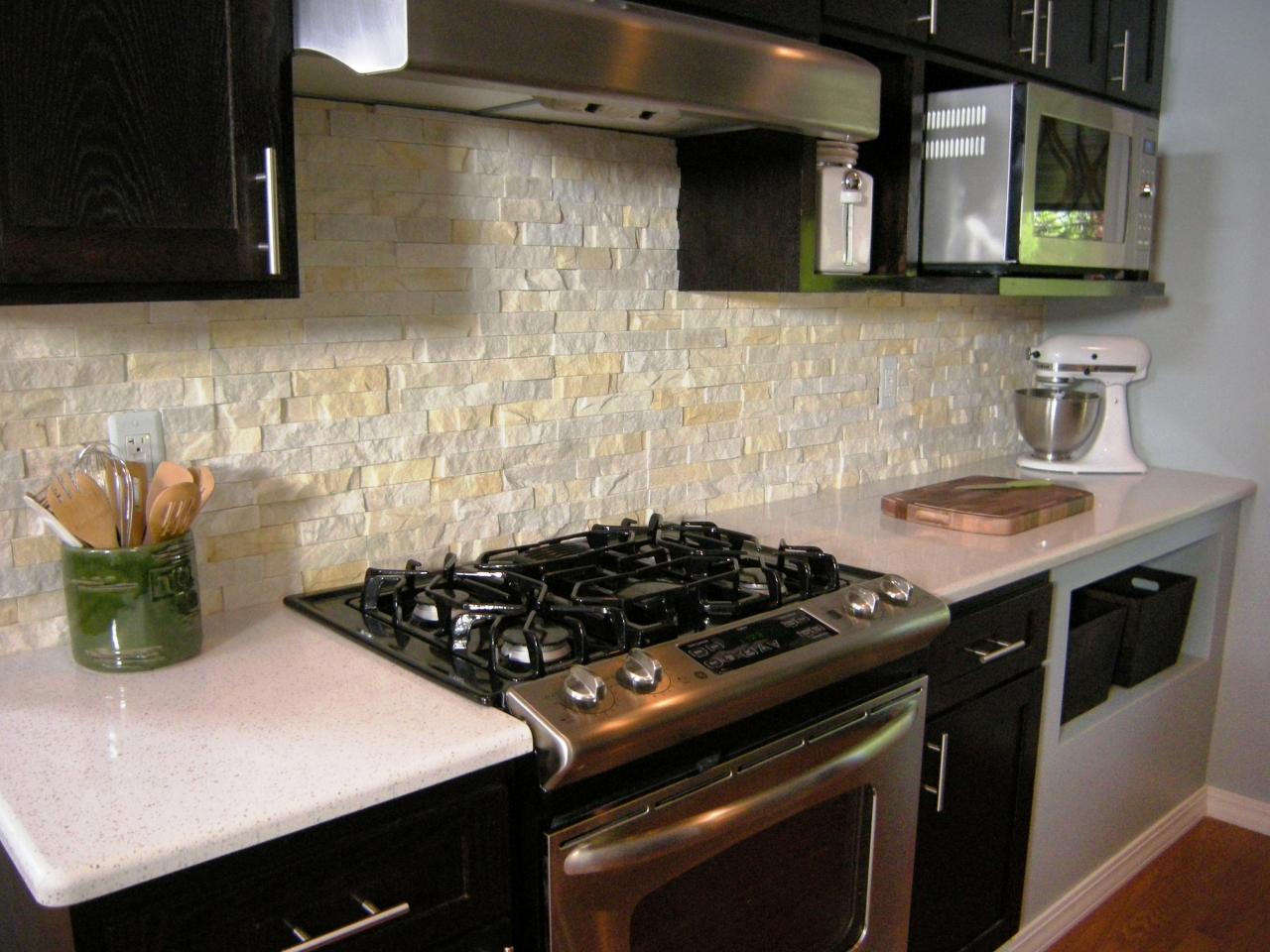
PVC with imitation masonry
On a note! Many are afraid to glue PVC panels on the wall of the working apron because of the low fire resistance of the material. But it is not so. The temperature of the ignition of plastic is 120 degrees higher than that of wood panel variations, and it can only deform, swell, or break down if long-term exposure to directed heat occurs. However, so high temperatures in our kitchens are not even near the stove. Therefore, you can safely mount the plastic for the walls on the entire area of the working area.
Of course, PVC has its drawbacks. Low-quality plastic can burn out or turn yellow under the influence of sunlight. It leaves much to be desired and the strength of budgetary materials – polyvinyl chloride is not able to resist strong blows, it is blown and can even break, especially when using sharp metal objects. For the same reason, you can not clean the coating with metal scrapers-there are dents and scratches that significantly degrade the appearance of the finish.
Wall panels from wood plates
In the middle price range there are wall panels made of wood – chipboard and wood fiber board. Of course, finishing from MDF is preferable because of lighter weight and environmental performance, but its cost is 1,5-2 times higher than the analog of chipboard and fiberboard.
Finishing of wood plates in combination with a countertop made of the same material:
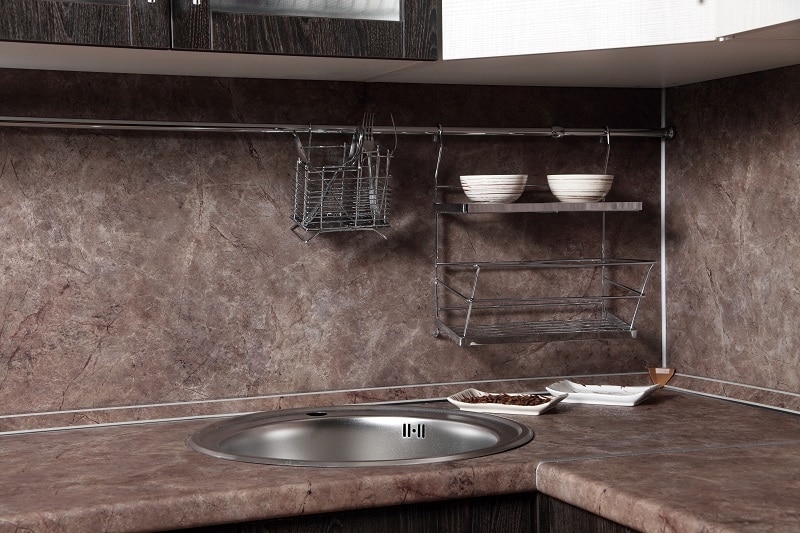
Finishing of wood plates in combination with a table top
On a note! According to their properties panels made from wood-based panels are considered more reliable than plastic ones.
The performance characteristics of coatings are almost identical:
- High strength and durability of wall panels made of fiberboard, MDF and chipboard allow using them for finishing any surfaces of the kitchen. However, be more attentive to the external coating of wood boards and the quality of its application – inexpensive materials (for example, PVC film), when carelessly handled, are quickly covered with scratches and can no longer prevent the penetration of moisture inside the panels.
- Plates of pressed wood have good sound and heat insulation properties.
- A variety of finishes of decorative panels from fiberboard, chipboard and MDF allows to choose the optimal solution for any budget and interior style. The most attractive is the veneered material – it very reliably imitates the structure of the tree. But keep in mind that natural veneer has low moisture and heat resistance (in fact, this is the same tree), so this modification should not be used for finishing the kitchen apron.
- The severity of wood boards and the need to maintain the integrity of the external coating also affects the complexity of the installation. To inexperienced masters this work is not always possible, therefore it is necessary to enlist the help of professionals.
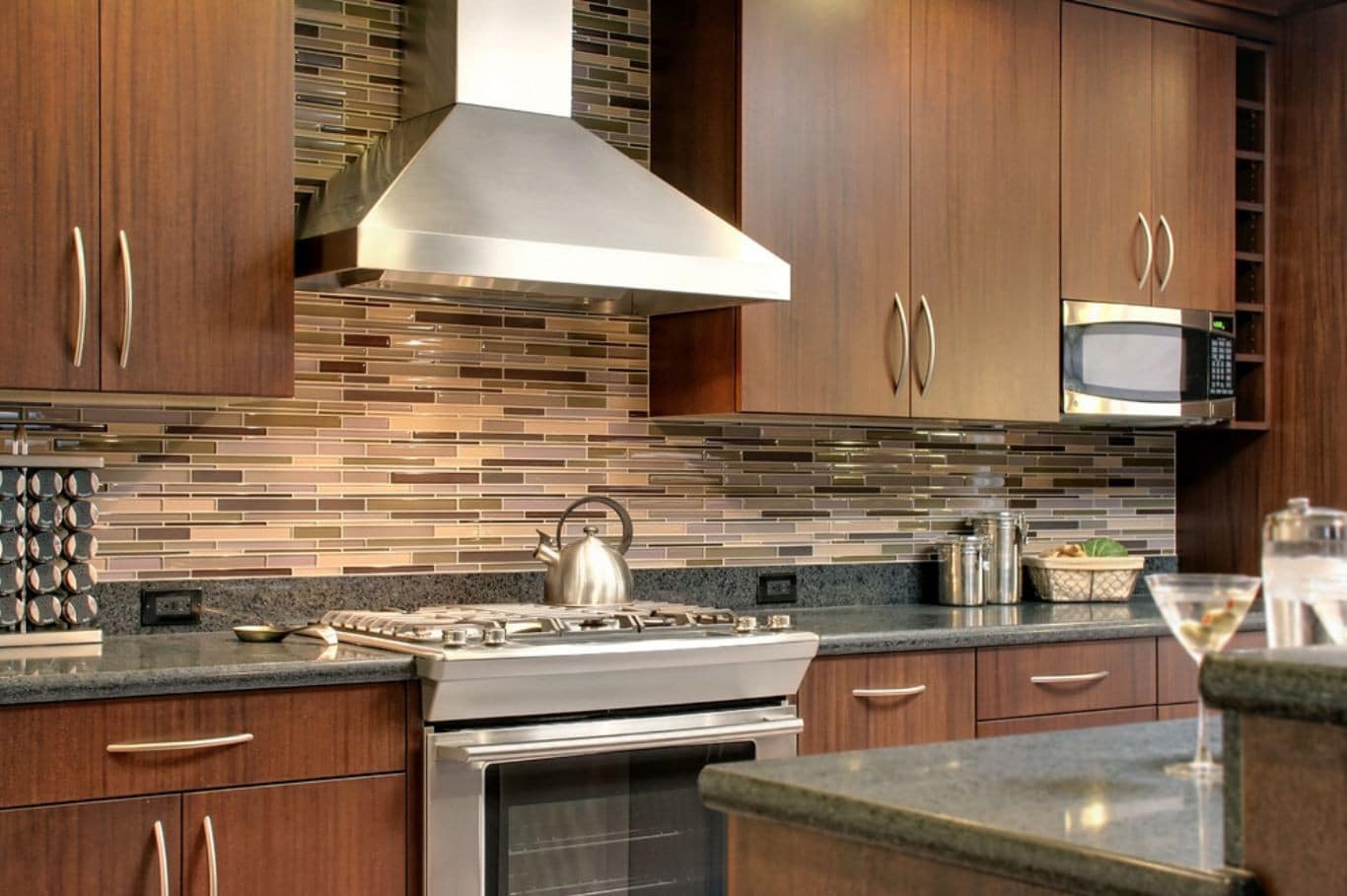
MDF with decorative protective coating
Important! Since wood is characterized by high hygroscopicity, choose plates with a good moisture resistant coating. This can be lamination or plastic coating (postforming). The most budget option is varnish or paint treatment. Beautifully look and veneered plates with wax-oil impregnation, but such material is impractical for finishing the working area.
Skinali – kitchen panels from glass
The most luxurious – both in terms of functionality and design – are wall panels made of glass. Drawing on skins are applied in several ways. The simplest and most budgetary option is sticking a color print on the inside of the panel. But it should be taken into account that such a drawing may eventually peel off or burn out of the sun. More reliable in this regard were skinned with photo printing, deposited directly on the glass.
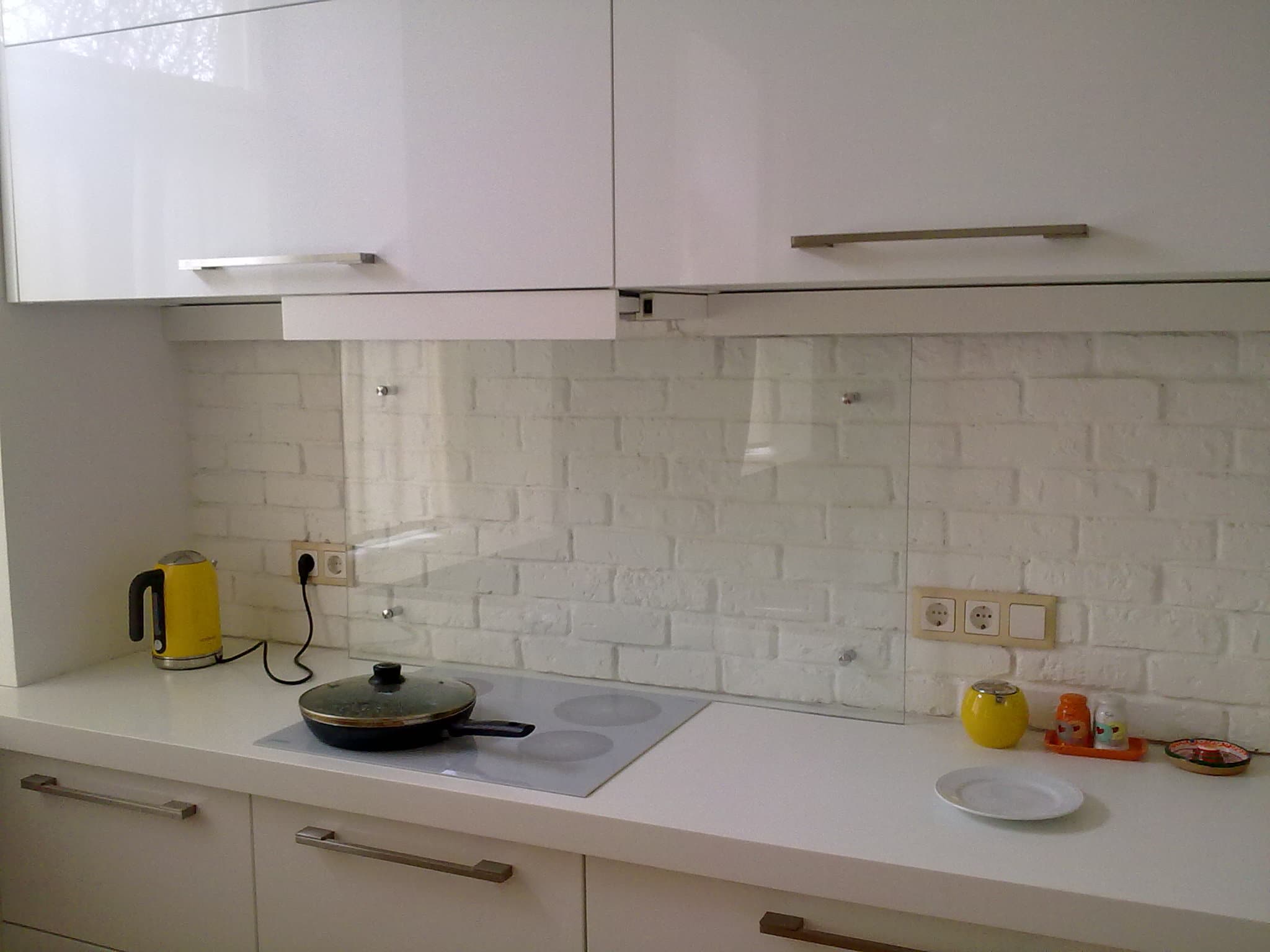
The simplest version of the glass finish for the working area of the kitchen
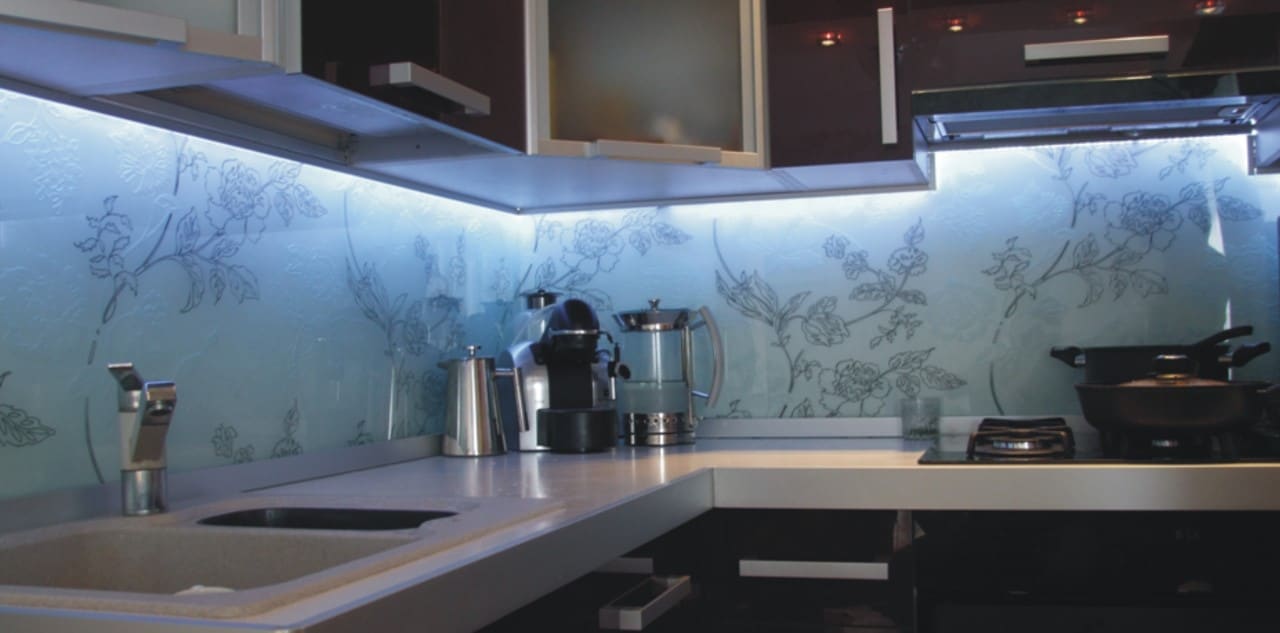
Skinaly with illumination and hidden fasteners
Advantages of the finishing material:
- The uniqueness and originality of the decor – the ability to apply various drawings, including individual orders, brightness and stability of colors, a variety of print-substrates, the variability of the lighting and the external texture of the glass allow creating amazingly beautiful interiors.
- Environmentally friendly and durable (though the latter is only for tempered glass panels).
- Hygienic and resistant to moisture, steam and household chemicals.
- Easy cleaning of grease and dirt.
Important! For a kitchen apron, it is advisable to consider only heat-resistant panels for walls, otherwise from cracks in the surface, cracks may form on the surface.
A harmonious combination of high functionality and aesthetics is eliminated as elite wall panels, so the most significant disadvantage is the high price and complexity of installation.
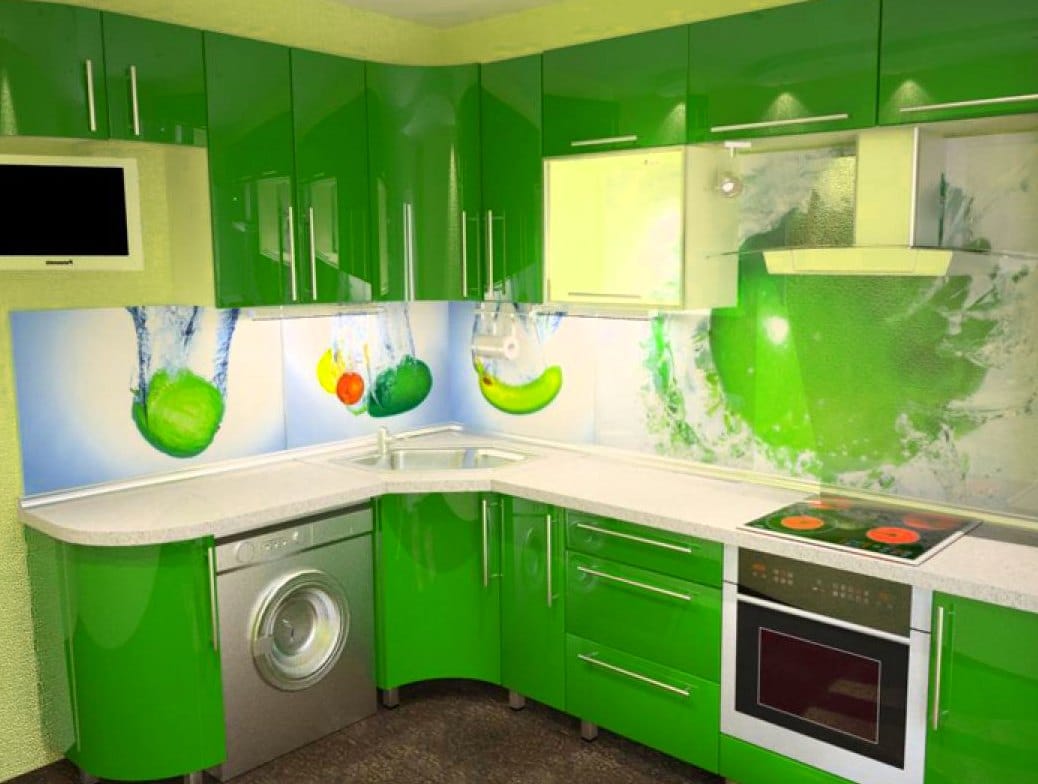
Coloring from the kanali can be selected for any kitchen
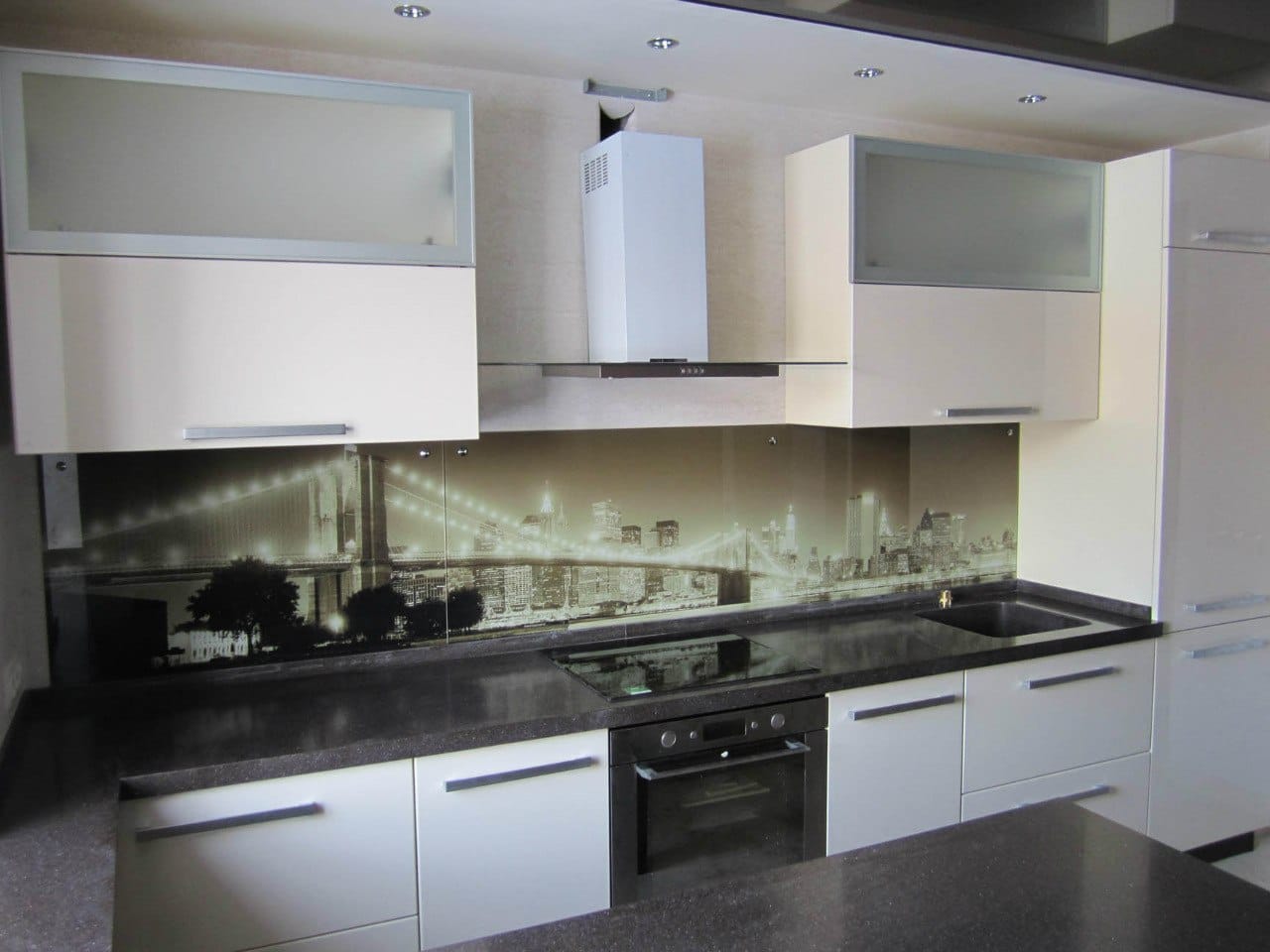
Glass apron – “night city”
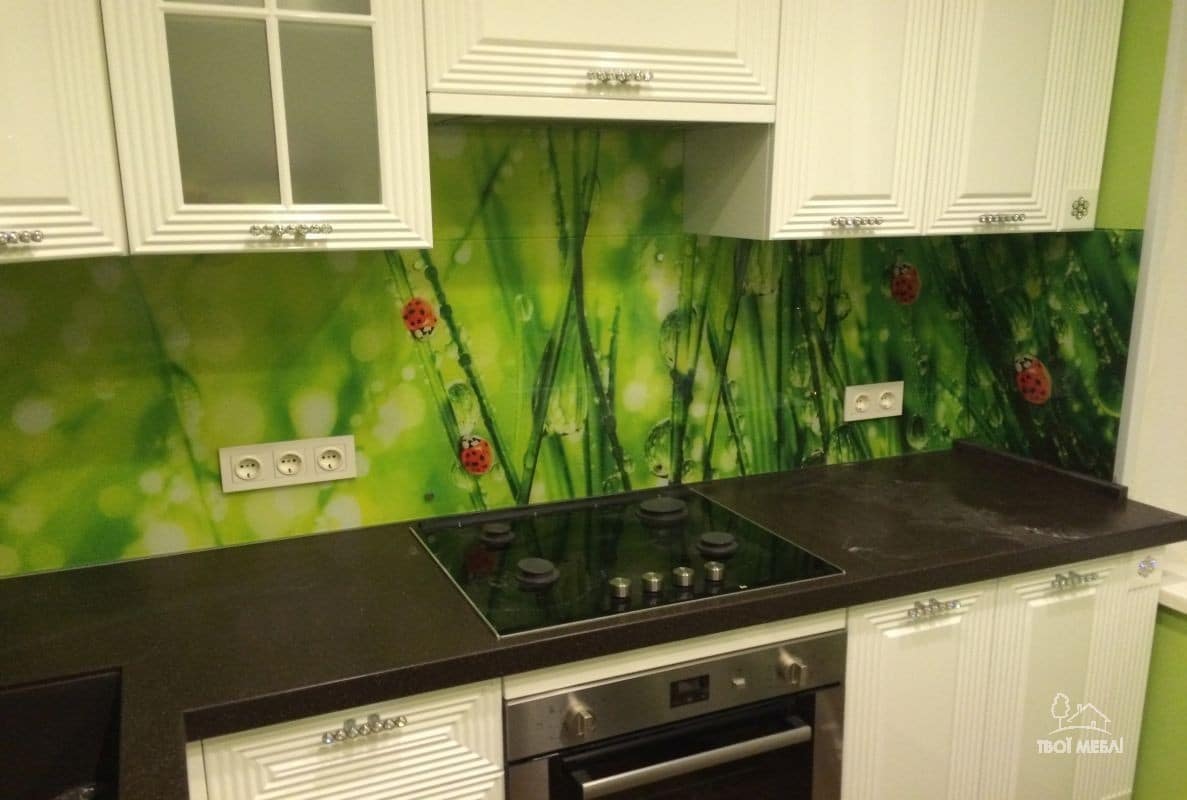
Skinali with 3D print
Panels of artificial stone
Adherents of heavyweight classical forms will have a liking for artificial stone. Strength, reliability, environmental friendliness, resistance to aggressive external influences lead this material to the very top of quality and price range. Pricing increases the weight, complexity of processing and installation. But the possibility of an elitist design of the entire kitchen interior completely compensates for the high cost.
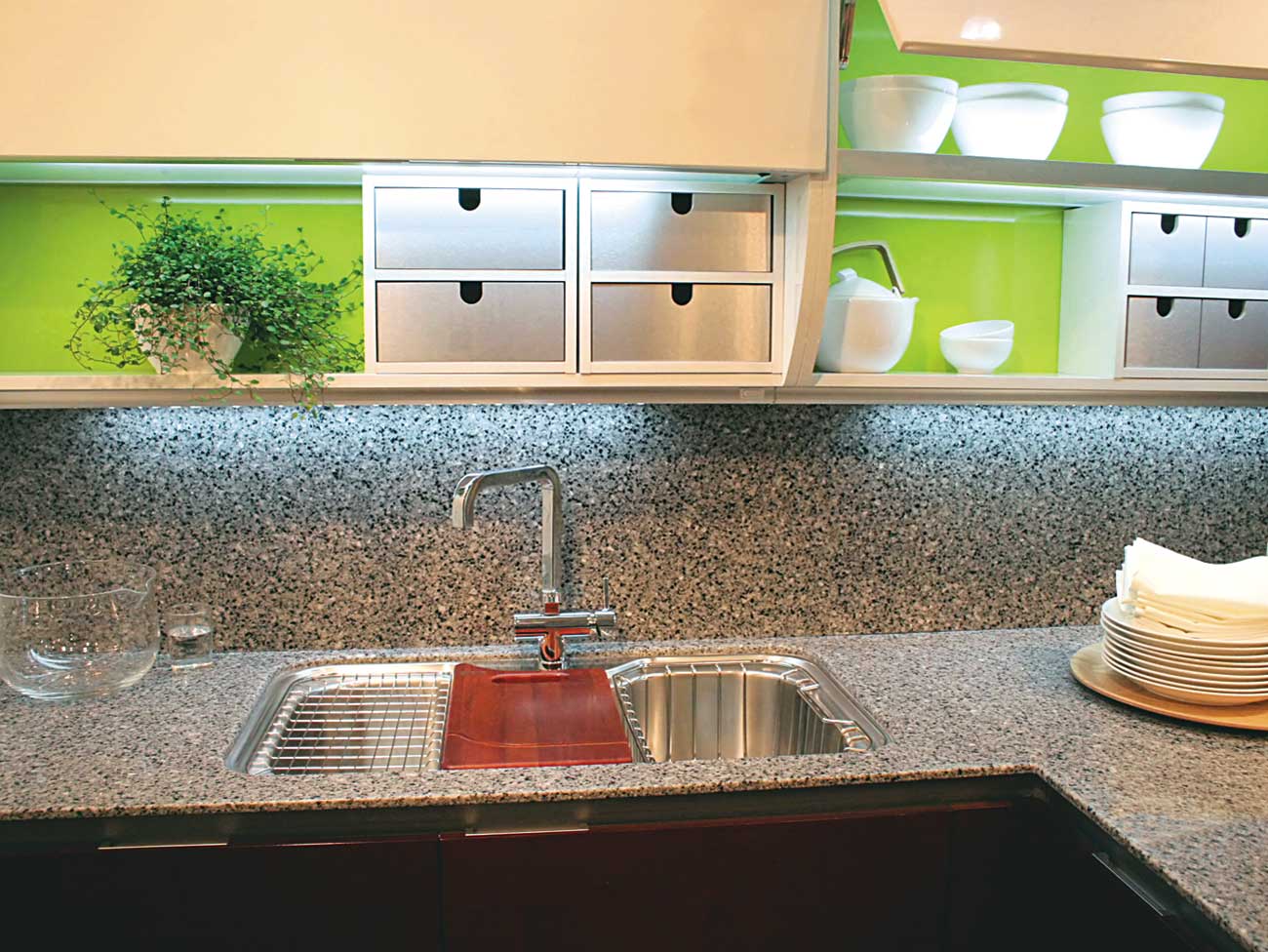
Kitchen wall panel made of acrylic
The most inexpensive panels are made of acrylic and porcelain stoneware. These materials are sensitive to high temperatures – faint spots remain from the hot pan or frying pan. Therefore, the most reliable is the polyester material with fillers of hot curing (agglomerate), the basis for which is granite, marble or basalt crumb. Such panels are not afraid of thermal changes, do not fade with time and are as close as possible to the color shades of natural stone.
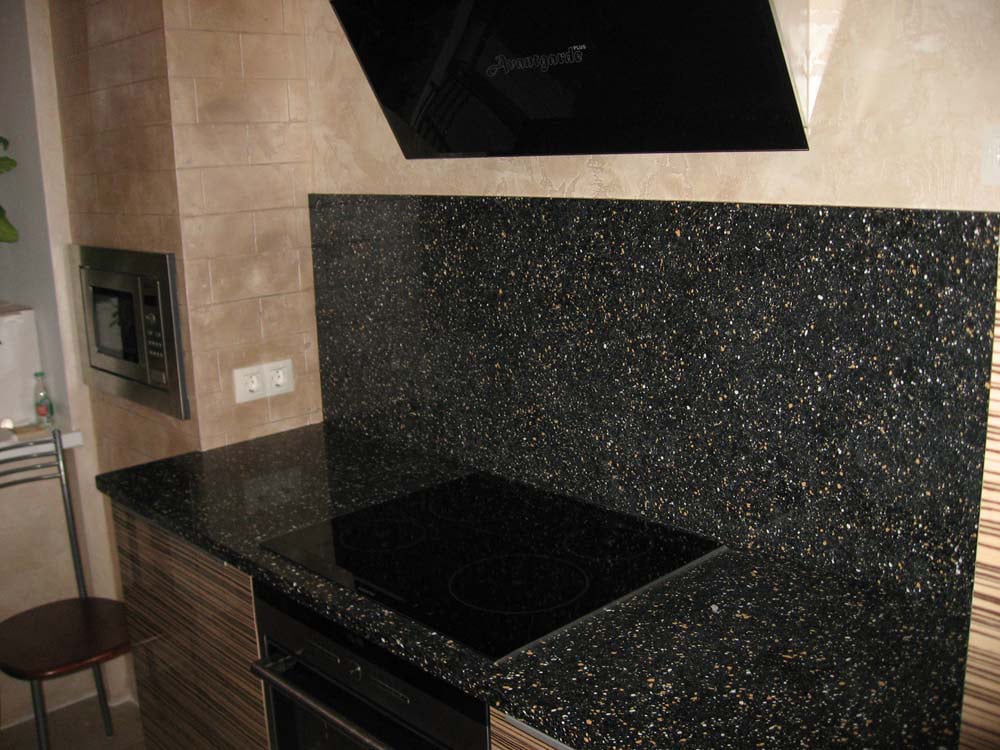
Wall decoration with quartz agglomerate
On a note! Natural stone is rarely used for the production of wall panels – in addition to the high price and impressive weight, this finish is not practical, for example, the same marble is excellent for absorbing fumes and soot.
Installation of wall panels – a guide to action
You can install the skinalin apron or the entire working area of the kitchen yourself, but in this case it is necessary to have a size sheet already fitted with treated edges and holes for fastening, otherwise the probability of damaging the expensive panel is high. A simpler option for installing a glass plate is gluing. This method of installation is less reliable, but helps to avoid visible fasteners on the surface of the apron.
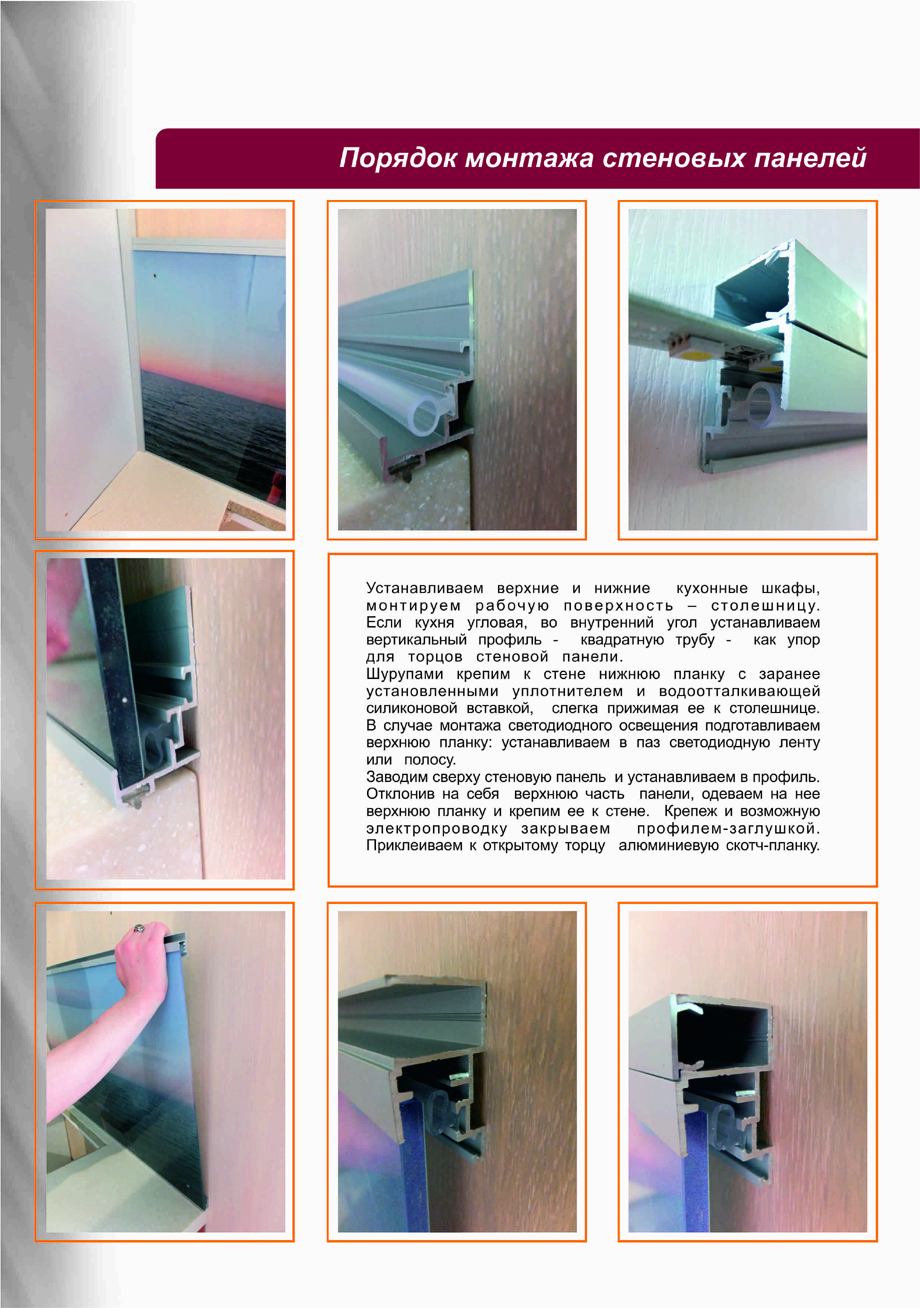
Principle of installation
To install wall panels with your own hands, it is better to choose the easiest options – plastic or MDF. And for both types of installation principle is almost the same.
Preparatory work – the device of the crate
To perfectly perfectly attach the coating, it is necessary to pre-assemble the frame, which is made of wooden beams, a profile of metal or PVC.
Advice! As support elements, it is easiest to use wooden bars with a cross section of at least 10 to 30 mm for plastic and a maximum of 25 to 50 mm for heavier MDF panels.
To do this, perform the following steps:
- We select the necessary number of elements of the crate. Support beams should be located perpendicular to the direction of the panels. For the most reliable fixing of the bars we mount from each other at a distance of not more than 50 cm (range from 20 to 45-50 cm).
- We mark the arrangement of structural elements using a plumb line or level for work.
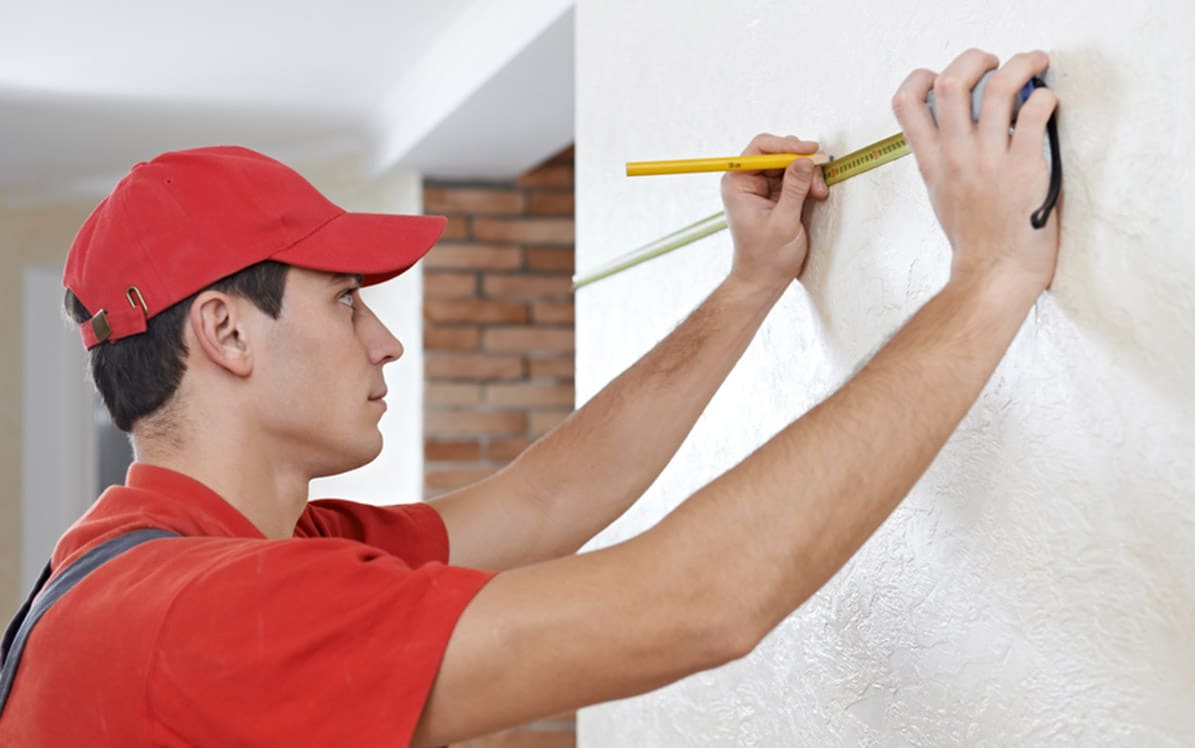
Marking of the future crate
- We fix the bars to the wall with screws or dowel-nails.
- We check the level of the future coverage level – the elements of the crate should not “walk” in relation to each other. If some parts protrude – they need to be cut off, and under the grooves you can put a trimming of a suitable width.
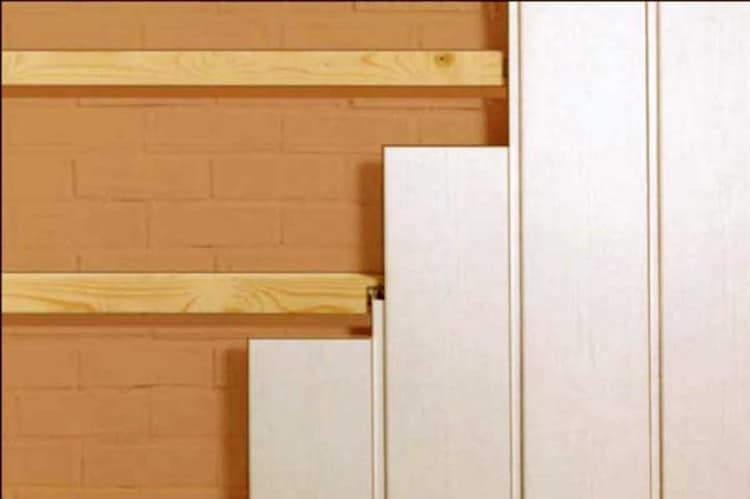
Installation of plastic panels on a wooden crate
Important! All wooden parts must be impregnated with protective compounds that reduce hygroscopicity and prevent infection with fungus or mold.
Nuances that should be taken into account when installing a PVC profile:
- The use of special plastic racks, together with a fastening clip (bracket), greatly simplifies the installation of panels, does not require the use of additional tools and shortens the work time. In addition, during the reverse process (dismantling), the removed elements are not damaged.
- The stability of the PVC profile guarantees the absence of deformation (buckling) at high humidity and removes the need to protect against unnecessary flora (mold and fungi).
- The PVC-profile is cheaper than the wooden frame.

Mounting PFX profile with special bracket

Fixing the panels with a fixing clip
Advice! Before installing the frame, you can make additional hydro- or thermal insulation, covering the wall with a film or a heater.
Fastening of PVC and MDF panels to the finished frame
The installation of prefabricated panels with a factory “lock” in itself is quite simple, but it is not superfluous to clarify some professional nuances.
Mounting principle:
- We begin work with the installation of fittings – external, internal corners and the final element.
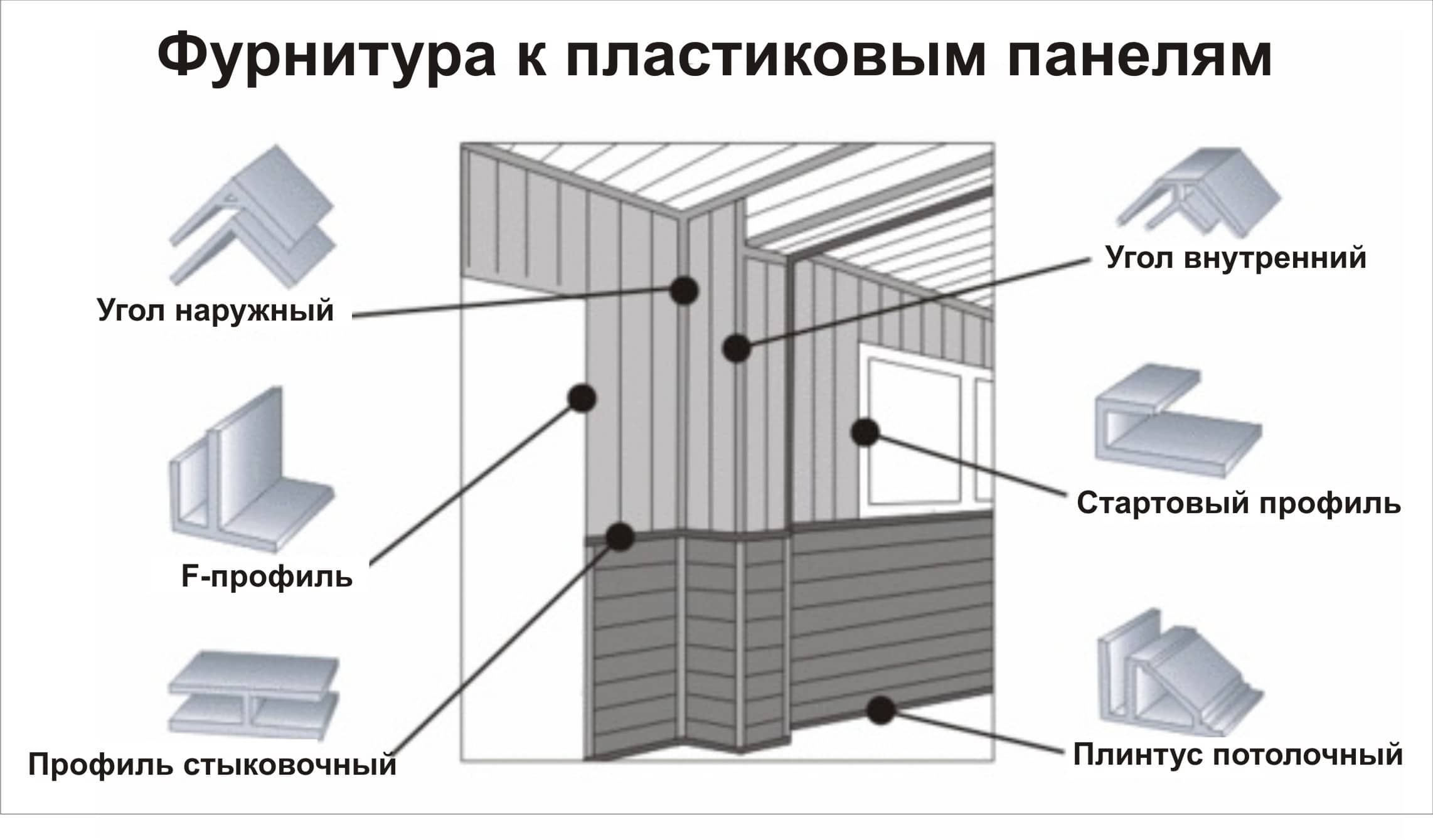
Various fittings for plastic panels
- We limit the upper edge of the ceiling skirting.
- We insert the panel into the groove of the installed element with the side with a narrow shelf.
- We check the inserted part with a plumb or level – the panel should be positioned perfectly evenly.
- We fix the element on the inner (invisible outside) bar to each reel of the crate. For fastening, you can use carnations, staples, screws, kleimers, liquid nails. If the frame is made of PVC panels, there are enough special clips without additional tools.
- Repeat rapport across the wall.
- The last panel is first pushed under the fittings, and then gently inserted into the groove of the previous element. The finishing panel must be fixed in such a way that the center of the last piece of fasteners remains 6-8 mm.
- The lower part of the panels is covered with a floor skirting board.
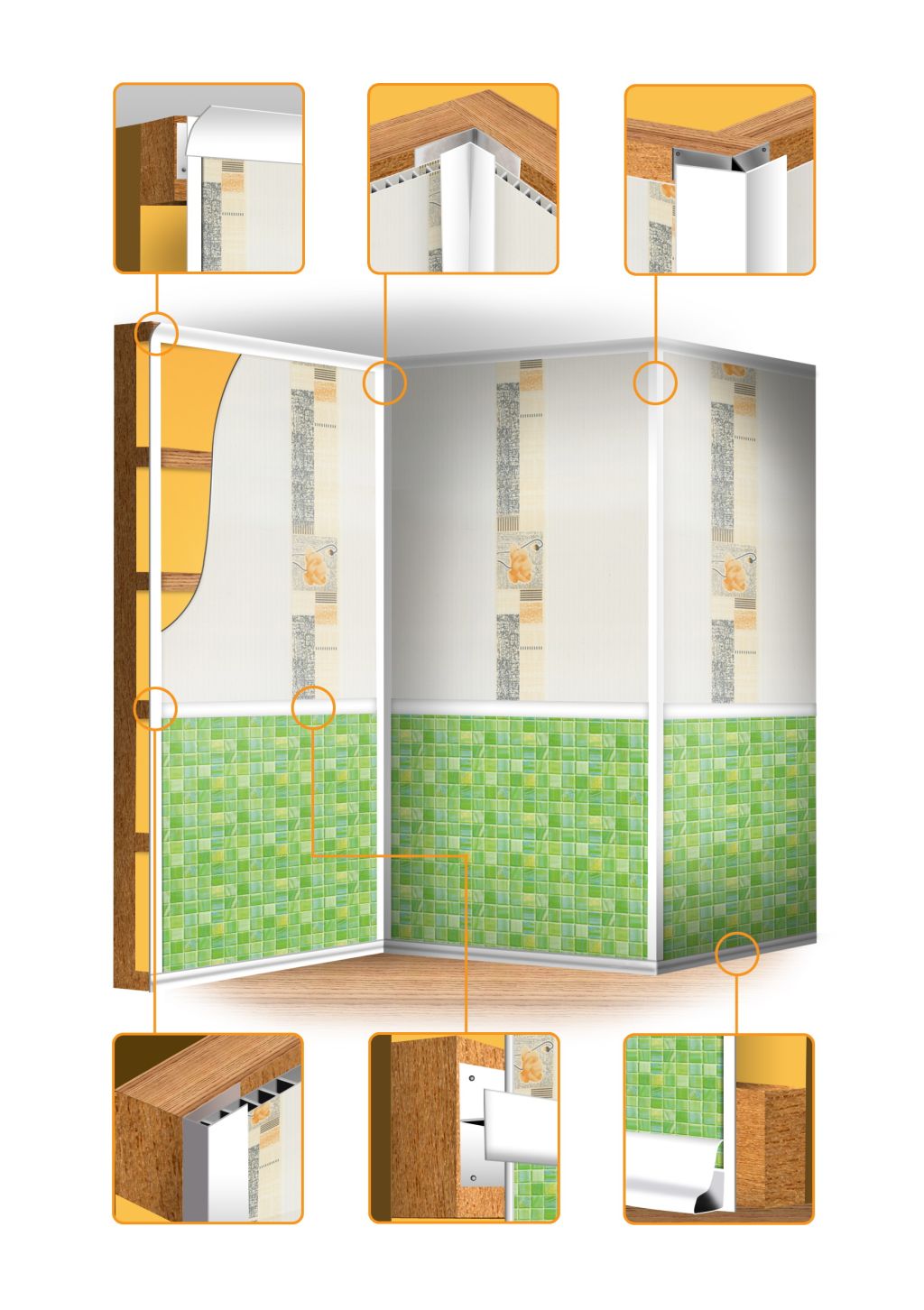
Fastening of panels with the basic elements of accessories
You can choose how to fix the wall panel in the kitchen: the laying can be vertical, horizontal or diagonal, the very principle of installation does not change from this, the difference is in the place where the fasteners are installed.
Important! When fully covering the walls of the panels, mark the position of the support bars of the frame. It is on them will need to attach the curtains.
Video: expert about decorative wall panels
Choosing wall panels as a material for finishing the kitchen, you get a lot of advantages: an excellent coverage with a wide variety of colors, which can be purchased inexpensively and mount yourself. But if there is no confidence in the skills of the home master, there is not enough time or there is a desire to translate into life is an original idea with a complex design, you can always take the help of professionals. In this case, you are guaranteed to get a perfectly flat surface of kitchen walls with the original color scheme, an interesting panel or a volumetric panel decor.


